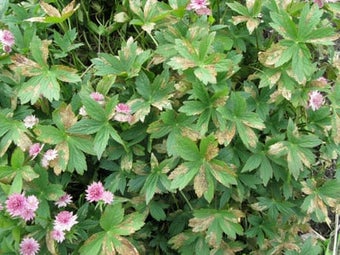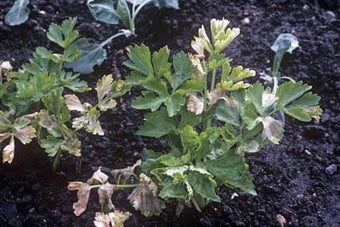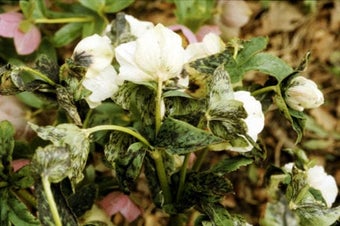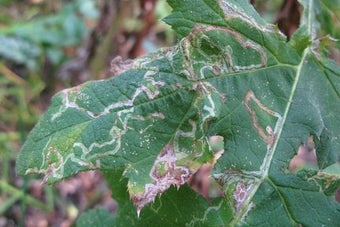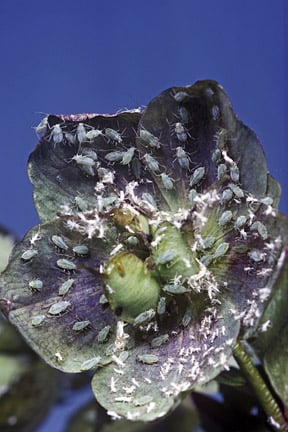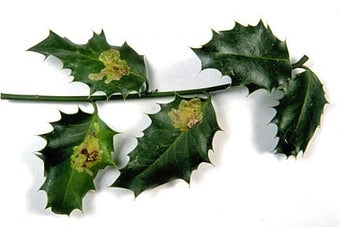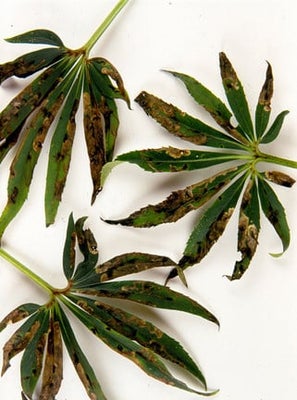
Quick facts
Common name - Hellebore leaf miner
Scientific name - Phytomyza hellebori
Plants affected - Stinking hellebore Helleborus foetidus
Main symptoms - Brownish black blotches and lines develop on the foliage during winter
Most active - August to March
What is hellebore leaf miner?
Hellebore leaf miner is a small fly with larvae that tunnel inside the leaves of Helleborus foetidus.
The fly belongs to the family Agromyzidae. There are several hundred species in this family known to occur in Britain, many are leaf miners as larvae. More information on Agromyzidae is available from the .
Nearly 900 other insects, including some beetles, sawflies and moths create leaf mines as larvae. More information about some of these insects can be found at .
Symptoms
- Only Helleborus foetidus is a host for this insect
- The mines in the leaves are initially brownish-black blotches, but later become sinuous, whitish-brown tunnels
- When numerous most of the foliage can be affected by spring
- Leaf mining occurs during late summer to early spring
Management
Although the mines can cover most of the leaves, H. foetidus plants are not greatly harmed and so the damage can be tolerated. Leaf miners can be part of a healthy balanced garden ecosystem, most species will have natural enemies including parasitoid wasps. Birds such as blue tits can sometimes open mines to consume the larvae within.
Biology
This hellebore leaf mining fly was first found in Britain in 1999 and is now widespread in England and occurs in parts of Wales. Eggs are laid on the foliage and the larvae begin feeding inside the leaves during August. However, the mines are not fully developed until the new year, with pupation taking place within the leaf mines.


